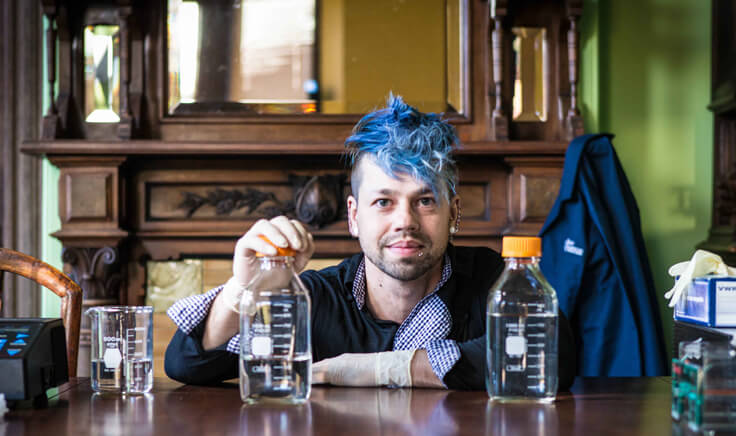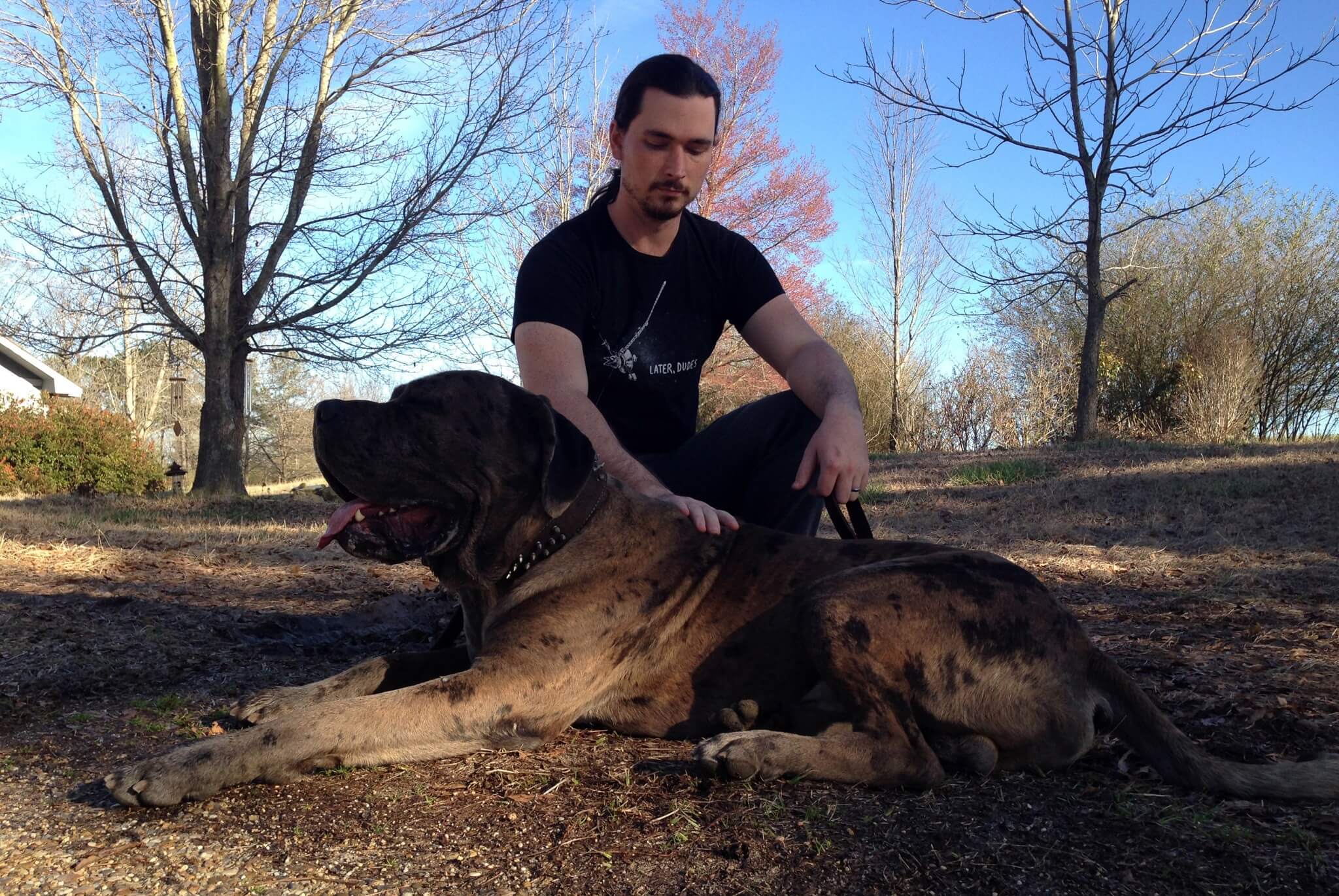The ease with which some of these tools can be used by home hobbyists – often referred to as biohackers – has raised both hopes and concerns about what the future might bring. On one hand, there are those who see the potential for scientific discoveries arising outside the walls of mainstream research labs. On the other, there are those who worry these unregulated biohackers could harm themselves or others with their creations.
At the forefront of the “biohacking” movement is Josiah Zayner, founder of ODIN, a company that sells DIY gene-editing kits targeted to hobbyists. His goal is to make the technology to accessible to everyone, not just “white, upper-middle class people.” Zayner doesn’t believe you should be excluded from the universe of genetic engineering if you are unable to afford “three fridges in a dedicated lab room in a 2,000-square-foot house.”

Most of his kits offer intriguing but innocuous projects like adding a jellyfish gene for fluorescence to yeast. However, Zayner stoked controversy through a series of high-profile stunts in which he performed experimental treatments on himself.
Long ailed by digestive issues, he chose to replace his gut bacteria with those taken from a healthy donor’s saliva, skin and feces. Such treatment is almost always performed by hospitals in life-threatening situations, and his daring earned him video features in The New York Times and The Atlantic. He says his symptoms have improved.
Zayner later injected himself at a San Francisco biohacking conference with DNA containing a Cas9 protein and guide RNA that would ostensibly cut and render non-functional the gene that produces myostatin. Belgian blue cattle, renowned for their lean, muscular beef, have a myostatin mutation. The idea is further bolstered by the story of a young German boy discovered in 2004 to have inactive copies of both myostatin-producing genes. He was reported to be extremely strong for his age, with no adverse health effects.
It’s possible that myostatin-producing genes are an evolutionary hangover from the pre-modern era when food was scarce. Humans who could binge after successful hunts and have their bodies store most of the calories as fat would be more likely to survive dry spells and pass on their genes.
Some researchers suggest that myostatin may lie at the center of potential remedies for degenerative diseases like muscular dystrophy. However, none had dreamed of a direct human test until Zayner. It’s still unclear, though, whether deactivating the gene as an adult will cause a body to begin prioritizing muscle over fat, as desired, or if it could throw the body’s carefully-constructed homeostasis into disarray. Months after his injection, Zayner has not yet submitted to a public measurement of his biceps.

After the procedure, The ODIN began selling copies of the DNA used to deactivate the myostatin-producing gene. Zayner argues that he’s not breaking any laws, because his website explicitly states that the DNA is “not injectable or meant for direct human use.” The warning rings hollow, however, considering that people buying the DNA were likely inspired by Zayner’s experiment on himself. And, the DNA doesn’t appear to have any other use.
However, Zayner also points to a “barrier for entry” that would block most users from attempting to follow in his footsteps. According to an article in MIT Technology Review, the DNA “would have to be produced in larger amounts, purified, and then delivered to the body using methods well beyond the skills of most consumers — methods that might involve viruses, additional chemicals, or electric shocks.” Indeed, it is unlikely that Little Johnny will be able to turn himself into Arnold Schwarzenegger for his high school science fair.
Zayner is not the only high-profile biohacker to invite controversy. Austin Traywick of Ascendance Biomedical, dropped his pants at Body Hacking Con and injected himself with an untested herpes treatment. Although some observers questioned the wisdom of Ascendance announcing to the world that its CEO has herpes, Traywick defended the decision. In his view, live testing allows the public to “hold us accountable.” Did the company receive ethical permission for the experiment? No, but in an increasingly common refrain, they did label the materials with “not for human consumption” before injecting them into a human.
The experiments and business activities of the biohacker community have aroused increasing attention from the FDA. A month after Zayner’s myostatin experiment, the agency released a terse statement saying it considers “any use of CRISPR/Cas9 gene editing in humans to be gene therapy.” Furthermore, the sale of “gene therapy products intended for self-administration and ‘do it yourself’ kits to produce gene therapies for self-administration…is against the law.” Regardless, the agency has not taken action against ODIN or Ascendance.
This was not the first encounter between biohackers and the FDA, which has occasionally resorted to oblique methods to register its disapproval with their undertakings. David Ishee, who manages a kennel in Mississippi, is a well-known biohacker who works with dogs. Centuries of artificial selection have caused man’s best friend to suffer from a host of genetic disorders, such as hip dysplasia in German shepherds, epilepsy in beagles, and hyperuricemia (excessive uric acid in the blood, which can lead to kidney failure) in dalmatians. Ishee believes that a single letter in the dalmation genome is all that needs to be edited to relieve dalmatians of their human-bestowed malaise.
In many ways, Ishee represents the biohacker community at its most inspiring and persuasive. Fixing canine mutations cannot be construed as tampering with nature, since they are the result of artificial selection. No one would seriously argue that hyperuricemia has an ancient evolutionary benefit. Since the diseases are the fault of human-enforced centuries of inbreeding, fixing them would be an act not just of compassion, but of atonement. However, Ishee has apparently ceased work on the project since the FDA responded with a proposal to regulate genetically modified animals essentially as drugs. (The FDA, however, would quibble with that characterization, noting that it “is regulating animals with intentionally altered genomic DNA as containing new animal drugs.”)
These days, even Zayner is dropping the confrontational attitude. In an interview with The Atlantic, Zayner adopted an apologetic tone, suggesting his actions played a role in Traywick’s herpes stunt, which he said was part of a culture of biohackers’ one-upmanship:
“Honestly, I kind of blame myself. There’s no doubt in my mind that somebody is going to end up hurt eventually.”

An increasing focus on ethics is welcome for biohackers and the genetic engineering community as a whole. The DIY Biology community released a draft code of ethics in 2011, but it is not legally enforceable and consists almost entirely of single-sentence platitudes on themes like transparency, open access, and modesty. Developing a more concrete, binding code of ethics, besides being the right thing to do, would be a massive PR boon for biohackers.
It might even give them an opportunity to develop a stronger, and less adversarial, relationship with the FDA. Tom Burkett, founder of a DIY Bio lab in Baltimore, suggests that biohackers are damaging their own efforts through experiments – designed to be provocative – that “could bring about increased regulation which would limit access to the technology.”
It would be shame to see increased federal oversight and enforcement led to a clipping of the wings of an enthusiastic biohacking community. It’s also possible that new regulations could ensnare and delay those going through conventional methods of government trials when seeking product approvals. Such delays would come at a particularly poor time for the US, when the nation already faces fears of falling behind China in terms CRISPR advances.
Biohackers descend from a proud lineage of scientists, including Nobel Prize winners, who experimented on their own bodies. Because these scientists did so within an ethical purview, and their experiments did not double as advertisements, they drove their fields forward. Biohackers can be the tip of a spear that pierces the veil of ignorance and inaccessibility, or they can play Icarus for genetic engineers as a whole.
Sean Hall is a writer and engineering student at Santa Rosa Junior College exploring the overlap between politics and synthetic biology. Follow him on Twitter at @seantheserene.































